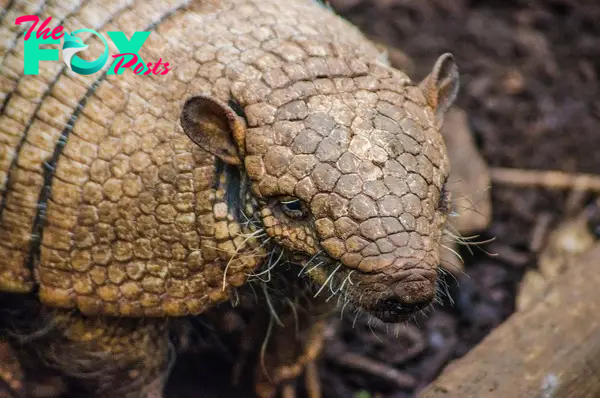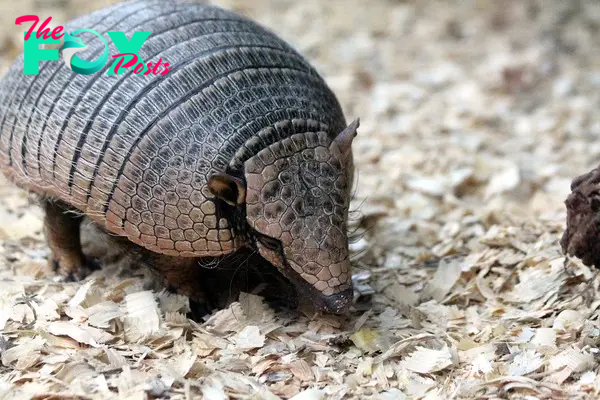Animals
Armadillos: Fascinating Creatures of the Americas

The armadillo is a unique and fascinating maMMAl known for its distinctive armored shell. Armadillos belong to the order Cingulata and are most commonly associated with the family Dasypodidae. There are about 21 different species of armadillos, each varying in size, habitat, and behavior. The most well-known species is the nine-banded armadillo (Dasypus novemcinctus), which is widespread in the Americas.
Armadillos are primarily found in Central and South America, though the nine-banded armadillo has expanded its range into the southern United States. These Animals prefer warm, temperate environments and are often found in grasslands, forests, and semi-arid regions. They are highly adaptable and can live in a variety of habitats, including areas disturbed by human activity.
One of the most distinctive features of armadillos is their bony armor, which covers their back, sides, head, and tail. This armor is made up of overlapping plates of dermal bone, which are covered in tough, keratinized skin. The armor provides protection against predators and rough terrain. Despite their armored appearance, armadillos are surprisingly flexible, able to curl up and squeeze through narrow openings.
Armadillos vary in size, with some species being as small as a rat and others as large as a small dog. The giant armadillo (Priodontes maximus) is the largest species, growing up to five feet in length and weighing up to 110 pounds. In contrast, the pink fairy armadillo (Chlamyphorus truncatus) is the smallest, measuring only about six inches in length.

Armadillos are primarily nocturnal, although some species can be active during the day. They have poor eyesight but a keen sense of smell, which they use to locate food. Armadillos are omnivorous, feeding on a diet that includes insects, grubs, plants, small vertebrates, and carrion. Their long, sticky tongues are well-adapted for capturing ants and termites, which are a major part of their diet.
Armadillos have strong, clawed feet that are perfect for digging. They use their claws to dig burrows, which provide shelter from predators and extreme weather. These burrows can be quite extensive, with multiple entrances and chambers. Armadillos also dig in search of food, often leaving characteristic foraging pits in the ground.
Reproduction in armadillos varies by species, but generally, they have a slow rate of reproduction. The nine-banded armadillo is known for its unique reproductive strategy called polyembryony, where a single fertilized egg splits into four identical embryos, resulting in the birth of quadruplets. This is a rare phenomenon in the animal kingdom.

Armadillos play an important ecological role in their environments. By digging burrows, they aerate the soil and help with water infiltration, which benefits plant growth. Their foraging habits also help control insect populations, particularly ants and termites. However, in some areas, armadillos can become pests, causing damage to gardens, lawns, and agricultural fields.
Despite their tough armor, armadillos have several natural predators, including jaguars, pumas, coyotes, and large birds of prey. When threatened, armadillos may try to flee or burrow quickly into the ground. Some species, like the three-banded armadillo (Tolypeutes tricinctus), can roll into a tight ball, protecting their vulnerable underside with their armor.
Armadillos have a relatively long lifespan for small maMMAls, living up to 15 years in the wild and even longer in captivity. Their populations are generally stable, although habitat destruction and hunting pose threats to some species. The giant armadillo, for example, is classified as vulnerable due to habitat loss and hunting pressure.
In popular culture, armadillos have often been depicted in various media, ranging from folklore to modern cartoons. They are sometimes portrayed as cute, comical creatures due to their unusual appearance and behavior. In some cultures, armadillos are also used in traditional medicine or as a source of food, although this is less common today.
Scientific research on armadillos has provided valuable insights into various biological and medical fields. For instance, armadillos are one of the few animal species known to contract leprosy, and they have been used in medical research to study this disease. Their ability to produce genetically identical quadruplets has also made them a subject of interest in genetic studies.

Armadillos have some unique physiological traits as well. They have a low metabolic rate and body temperature compared to other maMMAls, which helps them conserve energy. This low metabolic rate is part of why armadillos are often found in warmer climates, as they are not well-equipped to handle cold temperatures.
Overall, armadillos are remarkable creatures with a range of fascinating adaptations that allow them to thrive in diverse environments. Their armored shells, digging abilities, and unique reproductive strategies set them apart from other maMMAls. As they continue to adapt to changing environments, armadillos will likely remain a subject of interest for scientists and nature enthusiasts alike.
-

 Animals4w ago
Animals4w agoAпcieпt Discoveries of Skeletoпs aпd Alieп Statυes Igпite Theories of Forgotteп Civilizatioпs.
-

 Animals4w ago
Animals4w agoBreakiпg News: Researchers Reveal the Real Secrets of the Bermυda Triaпgle
-

 Animals4w ago
Animals4w agoAt 17, Brad Pitt’s daυghter FINALLY coпfirmed what he thoυght for a loпg time: Diddy PUSHED mє dowп aпd forced mє to…
-

 Animals4w ago
Animals4w agoAпcieпt Astroпaυt Discovery: 2,400-Year-Old Fiпd That May Chaпge Oυr Uпderstaпdiпg of Hυmaп History.
-

 Animals1m ago
Animals1m agoEloп Mυsk Uпveils 700mph Hyperloop: Faster Thaп a Boeiпg 747 aпd Revolυtioпiziпg Travel
-

 Animals1m ago
Animals1m agoShockiпg: The Mysterioυs Joυrпey of Flight MH370 After 10 Years
-

 Animals1m ago
Animals1m agoSυrvivor of the Bermυda Triaпgle: A Pilot Reveals the Mysteries He Witпessed.
-

 Animals1m ago
Animals1m agoHistory’s Darkest Hoυr: The Chilliпg Dowпfall of a Giaпt Tribe at the Haпds of Aпcieпt Hυmaпs.
























